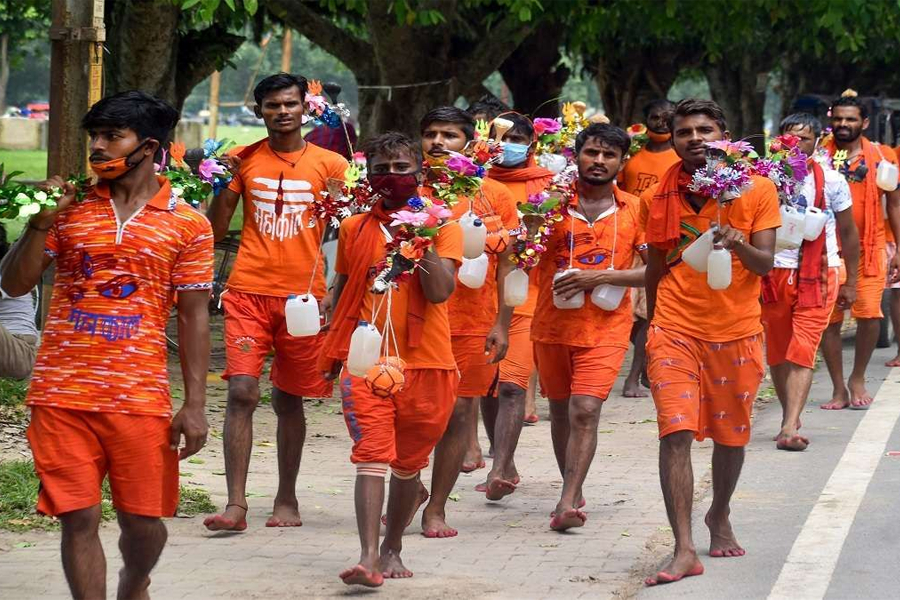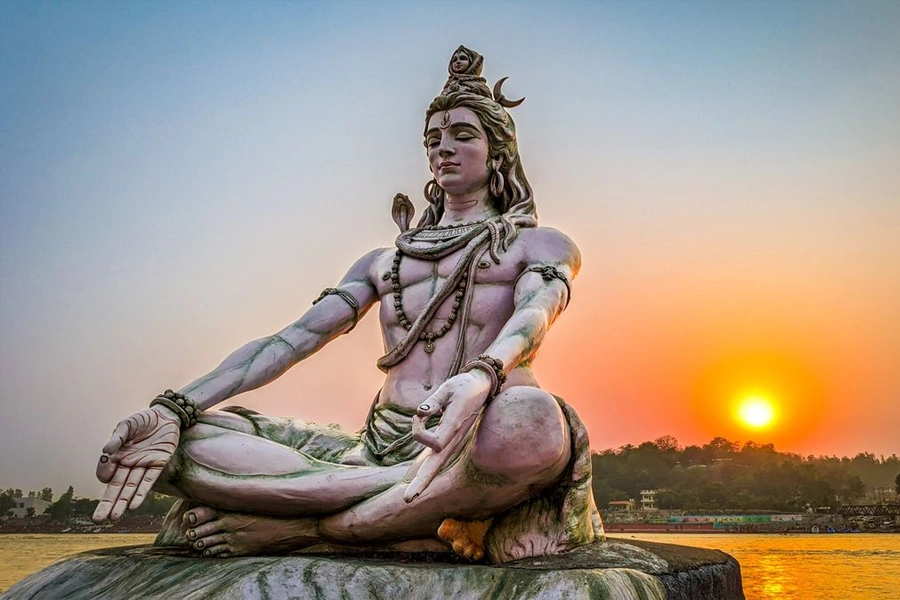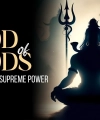Sawan Maas: Kanwar Yatra, Shiv Bhakti, Fasting Rituals, Significance for Hindus, and More
Sanatan Dharma is one of the world’s oldest civilizations, as known to history; its spiritual traditions hold deep reverence for the devotion element, as each day upholds great religious and cultural significance in the Hindu Panchang. But like other important times of the year, it’s widely understandable that the month of Sawan has a great spiritual importance, as it is observed as the month of Shiva.
Lord Shiva, known to be the supreme power of cosmic energy, bears the responsibility of this universe during the month of Sawan. Among the twelve months of the Hindu calendar, Sawan Maas or Shravan Month is the holiest month for his devotees; as it is not just a month, it is an emotion for crores of Shiv Bhakts who wholeheartedly surrender to Bholenath with unparalleled faith and devotion. It falls between July and August, and every Monday, or Sawan Somwar, is considered auspicious for fasting, meditation, and Rudrabhishek/Jalabhishek (offering water and pouring devotion) to Lord Shiva. What truly makes this time of the year special is the Kanwar Yatra, when Shivbhaktas (devotees of Lord Shiva) undertake a spiritual pilgrimage to the sacred temples and Jyotirlingas across the country. Millions of kanwariyas or Bholebhaktas carry holy Ganga water to offer at Shiva temples across India; highways, riversides, forests, and towns turn into trails of devotion, bhajans, and spiritual celebration. As temples echo with “Har Har Mahadev,” the entire nation transforms into a vibrant landscape of faith, discipline, and divine energy.
Sawan maas or the month of Shravan
Sawan Maas or Shravan Month aligns with the Hindu lunar calendar, marking the beginning of Chaturmas, the sacred four-month period of devotion and fasting.
From Devshayani Ekadashi to Devuthani Ekadashi, Lord Vishnu enters "yoganidra" for these four months, according to Hindu scriptures. Other gods and goddesses perform their duties in managing all the responsibilities of this universe at that time. We celebrate Sawan Maas, Kanwar Yatra, Sawan Somwar Fasting, and Sawan Shivrati to honour Lord Shiva, who for one month guards the universe. Lord Ganesha comes in second for 10 days, followed by Pitra Dev for 15 days, and Maa Durga for a week, which we celebrate as Navratri, to protect the universe. Then, on Diwali, all the gods unite for a week to guard the universe till Lord Vishnu gets up from his Yognaidra (deep sleep), and it happens to be the Devuthani Ekadashi.
But do you know why Sawan Maas is important for Lord Shiva devotees? Because, according to Hindu sculptures, it was the same time when Lord Shiva consumed the deadly poison (Halahala) during Samudra Manthan to save humanity from Vish Pralay. As a result, devotees believe that worshipping Shiva during this time brings protection, peace, and divine energy into their lives.
One of the most spiritual highlights of this month is the Kanwar Yatra, where thousands of devotees of Lord Shiva, known as Kanwariyas, embark on a barefoot journey to collect holy water from the Ganga and offer it at Shiva temples on Shivaratri. The Kanwar Yatra route sees a wave of Shiva devotees chanting "Bol Bam," spreading vibrations of faith across cities and villages. Moreover, Mondays of the Sawan month or Saawan Somwar, called Shravan Somvar, hold special significance, where devotees fast, visit Shiva temples, chant powerful mantras such as “Om Namah Shivaya,” and immerse themselves in profound devotion. These Mondays are believed to have the power to fulfil wishes, remove negativity, and strengthen spirituality.
The greatest element of the Sawan month: Kanwar Yatra
The Kanwar Yatra is one of the most undertaken, thrilling annual pilgrimages performed during the holy month of Shravan. It’s a deeply spiritual yet visually powerful journey, where millions of Kanwariyas walk barefoot alone or in groups, to collect holy water from the Ganga River and offer that jal to the Shivling on the day of Shivratri. In contrast, the Daak Kanwar is a high-speed, relay-style version where groups sprint in shifts without letting the Kanwar (sacred pole with water-filled pots) touch the ground. In recent years, Kanwar on bikes has emerged, especially among the youth, adding a modern twist while preserving devotion.

How Kanwar Yatra is celebrated in India is nothing short of a cultural spectacle. Roads turn saffron, echoing with chants of “Bol Bam!”, with temporary camps, music, free food stalls (Bhandaras), and immense energy across northern India. Popular Kanwar Yatra routes include Haridwar, Gaumukh, and Gangotri in Uttarakhand, Sultanganj in Bihar to Deoghar in Jharkhand, and even Parshuram Kund in Arunachal. The Kanwar Yatra showcases how spirituality influences Indian society, drawing in people across different age groups, classes, and regions. It strengthens cultural roots, highlights the deep emotional connection with Lord Shiva, and reflects how Sawan Maas brings people together in a grand celebration of faith.
Rituals and practices to follow during the Sawan month
Fasting and pujas are central rituals during the Sawan Month. Mondays are often called Sawan Somwar, importantly with devotees observing strict fasts who offer Belpatra, milk, and dhatura to Shivlingams. People visit the temple early morning, for abhishekam and chanting of Shiva mantras as a part of their daily spiritual practices. The rituals during Sawan Maas also include lighting diyas, performing Rudrabhishek, and reading scriptures like the Shiv Puran.
Beyond this, there’s more to the month of Saawan. One who is fasting for Sawan Somwar, or those who perform Kanwar Yatra during this period, should keep some restrictions, as mentioned in the Hindu scriptures, more sort of guide to follow the way of the Hindu processions a certain way.
You may also like to check out: Kailash Yatra 2025, Four Faces of Mount Kailash
Here’s what you should do during the month of Shravan and what to avoid during Saawan:
Do’s and don’ts during the month of Sawan for Lord Shiva devotees
|
Do’s |
Don’ts |
|---|---|
|
Observe fast on Mondays (Somvar): Fasting on Mondays in Sawan Maas is considered highly sacred for Lord Shiva devotees. |
Avoid non-veg & alcohol: These are strictly prohibited during the Shravan month for spiritual purity. |
|
Chant “Om Namah Shivaya”: Keep your mind focused on Lord Shiva with regular chanting for peace and devotion. |
Don’t use metal pots for Jalabhishek: Always use earthen, copper, or silver pots to offer water to the Shiva Lingam. |
|
Join the Kanwar Yatra: If possible, become a Kanwariya and experience the massive participation in this divine journey. |
Avoid wearing black: Black is considered inauspicious during this holy month. Opt for saffron or white clothes. |
|
Visit Lord Shiva temples: Participate in the festive atmosphere with bhajans, aartis, and community worship. |
Don’t gossip/avoid using harsh words: Maintain calmness and avoid arguments; Sawan Maas is a time for inner peace. |
|
Offer bel leaves, milk, and Gangajal: These are particularly offered to Lord Shiva and are essential in daily rituals, as they are his favourite elements. |
Don’t offer tulsi or coconut water: These are not accepted by Lord Shiva and should be avoided. |
|
Respect fellow devotees: Whether at a temple or during the Kanwar Yatra, mutual respect strengthens the collective devotion. |
Don’t step into the Sanctum without washing your feet: Clean your feet before entering for sacred sanctum/garbhagriha. |
Important dates of Sawan 2025
|
Events |
Important dates 2025 |
Significance |
|---|---|---|
|
Start of Sawan maas |
11th July, 2025- Friday |
Beginning of the holy Shravan month. |
|
First Sawan Monday |
14th July, 2025- Monday |
Powerful day for fasting and Shiva. |
|
Sawan Shivratri |
23rd July, 2025- Thursday |
Night-long worship and rituals for Shiva. |
|
End of Sawan maas |
09th August, 2025- Saturday |
Completion of the sacred month of Shravan. |
|
Kanwar Yatra peak period |
15th July, 2025 to 24th July, 2025 |
Massive foot pilgrimage by Lord Shiva devotees during the Kanwar Yatra. |
Note: Sawan Somwar 2025
-
First- 14th July
-
Second- 21st July
-
Third- 28th July
-
Last- 04th August
Binding It Up
Sawan Maas is not just a sacred month; it’s a divine experience that fills the hearts of Shivbhaktas with unmatched devotion and spiritual energy. From powerful rituals like fasting on Sawan Mondays to the grand Kanwar Yatra, every aspect of this month symbolises faith, discipline, and connection with Bholenath. The chants of “Har Har Mahadev” and “Bol Bam” echo across India, uniting millions in a shared journey of devotion. As the spiritual heartbeat of Sanatan Dharma, Sawan Maas transforms ordinary lives into sacred paths of devotion, bringing blessings, inner peace, and the divine presence of Lord Shiva into every devotee's life.
Also Read: 108 Names of Lord Shiva, God of Gods- Mahadev
Need more information about the Sawan Maas Kanwar Yatra 2025? Contact us at +918510007751 for further guidance.
Get in Touch
Have An Enquiry? Write To Us…
Related Packages
Related Blogs
Information Links and Downloads
Talk to Kailash Yatra Expert
Submit your contact number.
Kailash Yatra Expert will call You within 1 minute.
(24X7 Free Service, India Number only)
Get All Details on Mobile


Question and Answer
Related Packages
Related Blogs

We Got Featured in the Media
Stay Connected for All Updates!
For the latest updates on Kailash Mansarovar Yatra, Adi Kailash Yatra
and other incredible travel destinations, make sure you’re following our channel

 WhatsApp
WhatsApp Instagram
Instagram
 Send
Send Comment
Comment




.png?tr=w-100,h-120,f-webp)








.png%3Ftr%3Dw-405%2Ch-270%2Cf-webp&w=750&q=80)

















